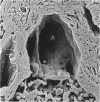Abstract
In dogs, lymph drains from tissues throughout the head, including the tonsils, along lymphatic vessels to the facial, parotid, lateral retropharyngeal and mandibular lymph nodes. From the mandibular lymph nodes, lymph may flow to the ipsilateral medial retropharyngeal lymph nodes, or along anastomotic connections to the contralateral node. Afferent lymphatics convey lymph from these nodes to defined areas in the medial retropharyngeal nodes. They divide over the surface of the node, and within trabeculae. Terminal afferent lymphatics are connected to the subcapsular and trabecular sinuses either through circular or oval holes in the vessel wall, or terminate at the sinus where the vessel contains a valve adjacent to the point of entry. The subcapsular sinus surrounds the entire node, and is continuous with an interconnecting network of trabecular and cortical sinuses which convey lymph through the cortex. Connective tissue septa extend through the sinuses and lymph flows freely between adjacent sinuses through holes in the septal walls. Initial efferent lymphatic vessels, which arise from the medullary sinuses between medullary cords, converge towards and unite within the network of medullary trabeculae. Other vessels, which contain valve-like flaps, drain lymph from the subcapsular sinus. Efferent vessels emerge along the hilus and coalesce to form the tracheal trunk. The tracheal trunk has several layers of smooth muscle cells, well developed elastic laminae and connective tissue, surrounding the lymphatic endothelium.
Full text
PDF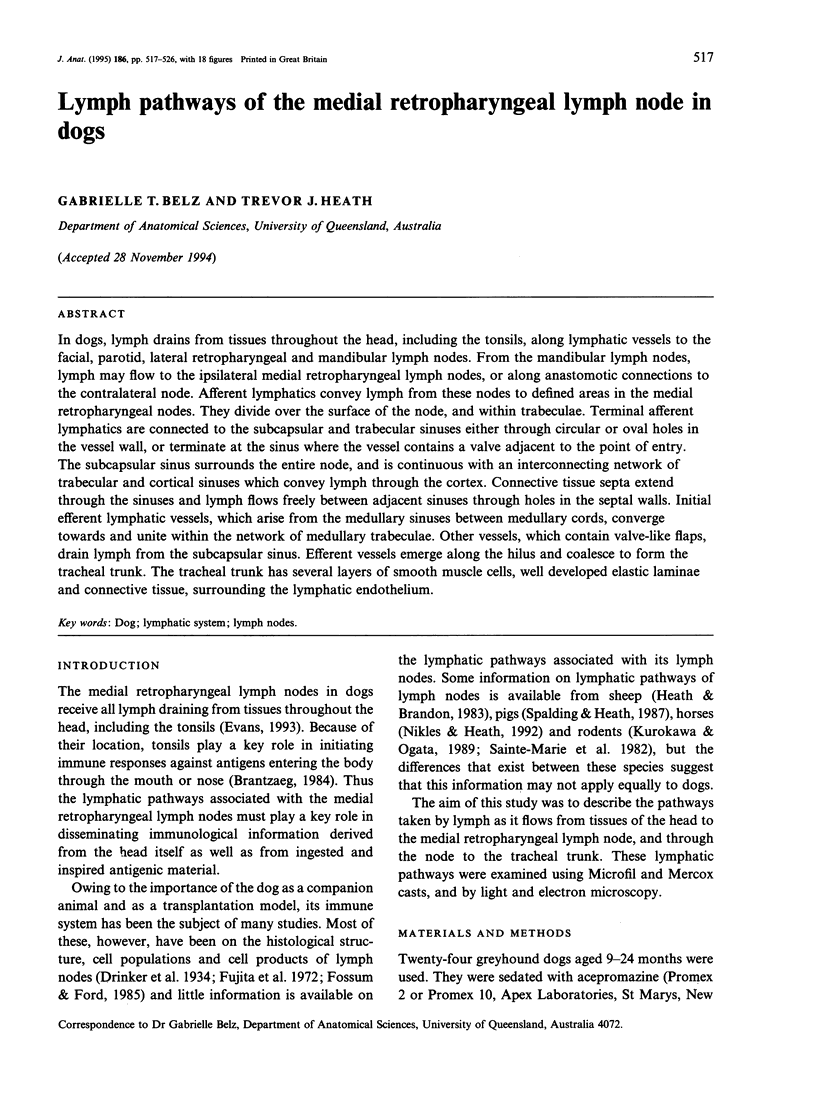
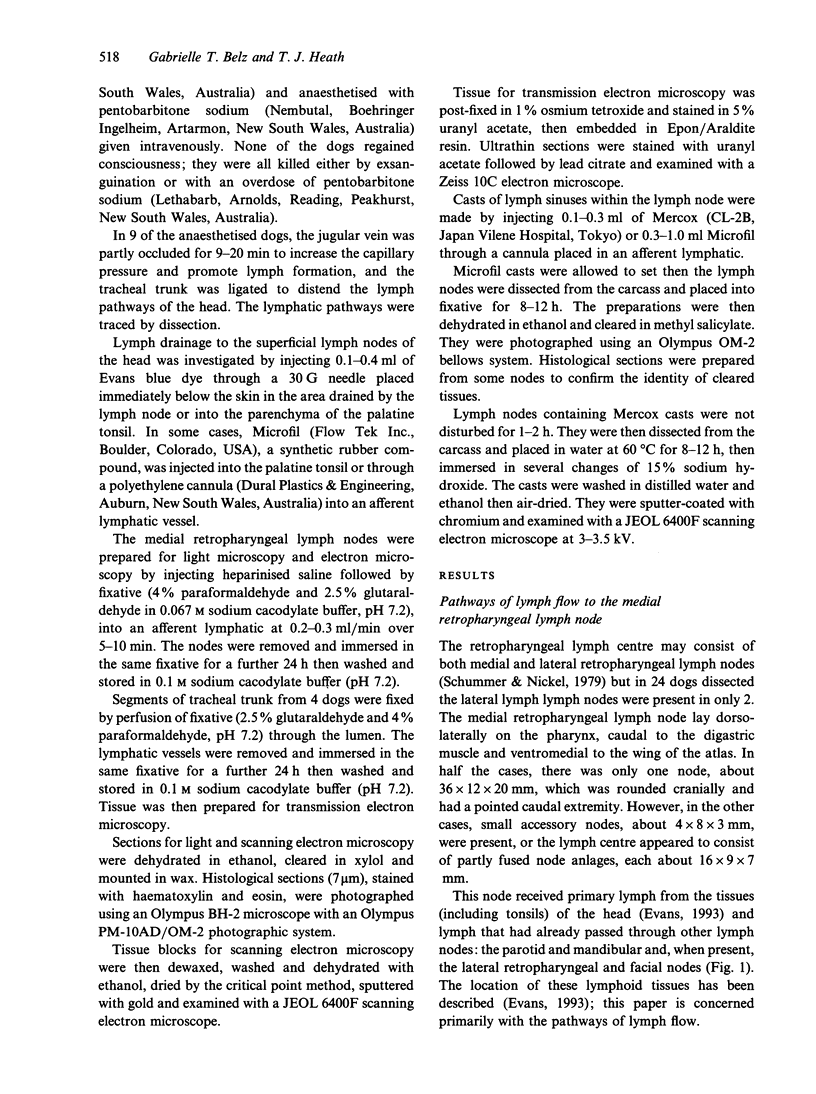
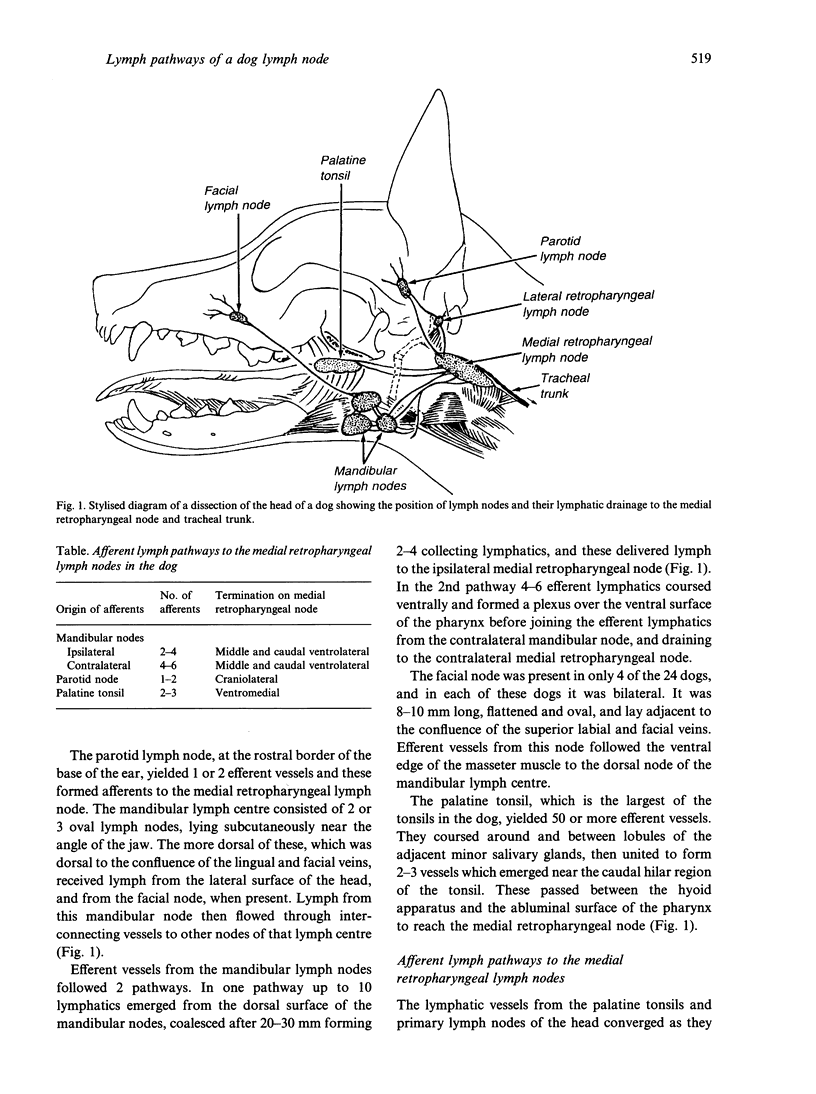
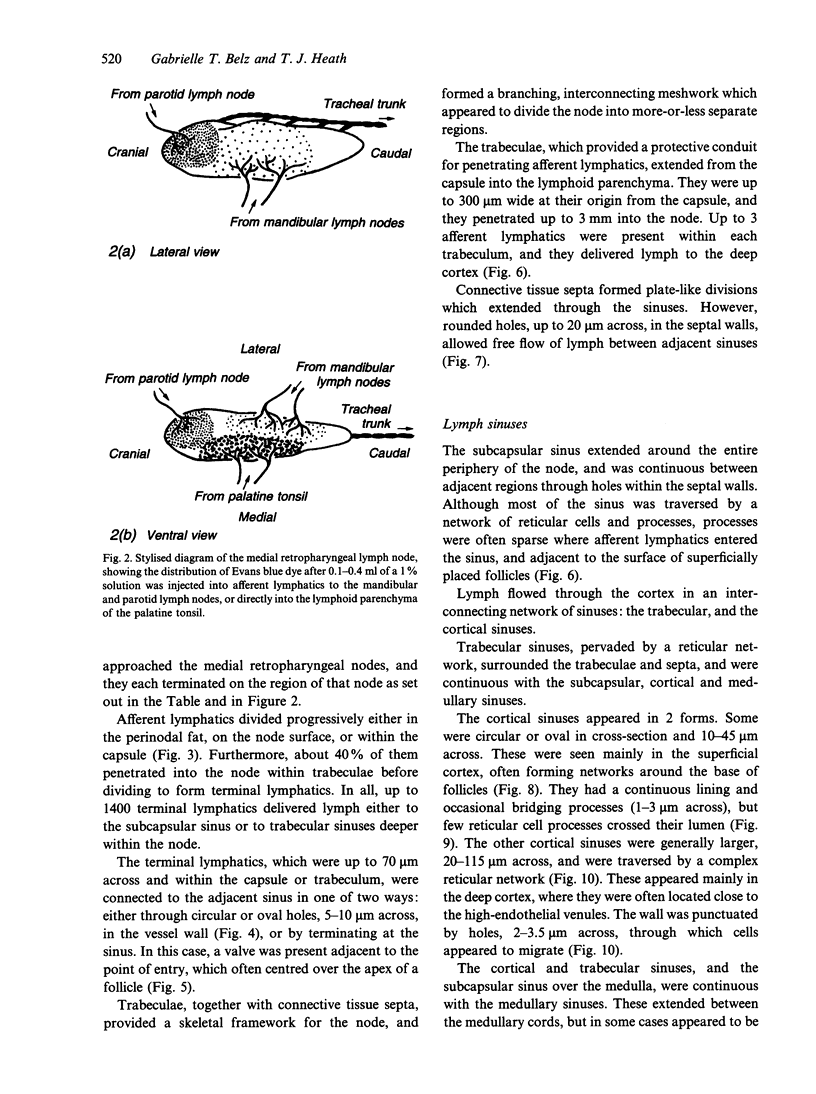
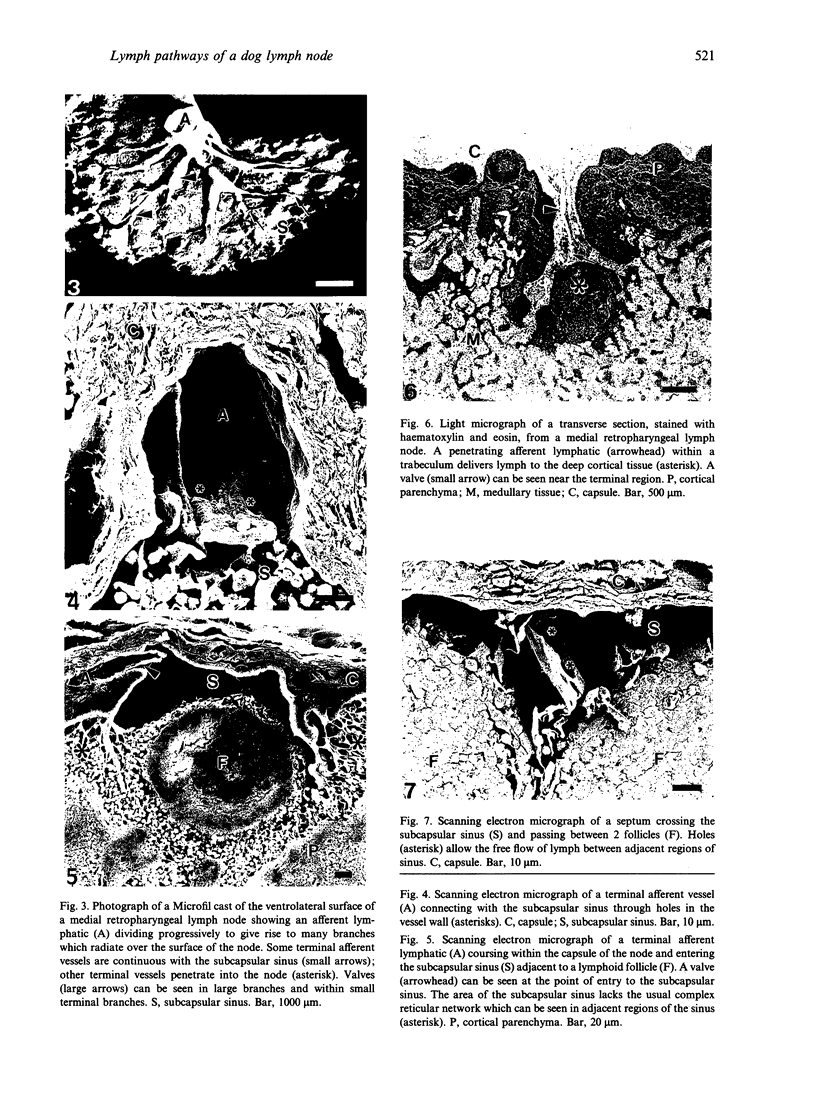
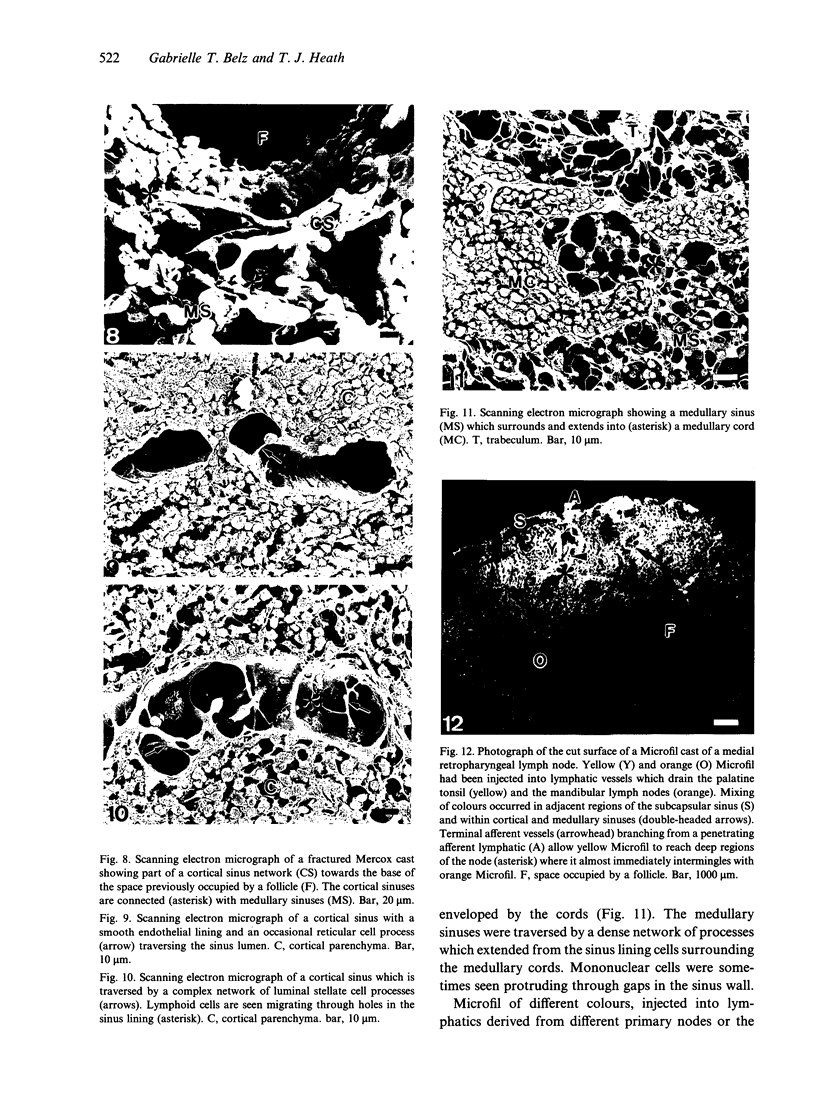
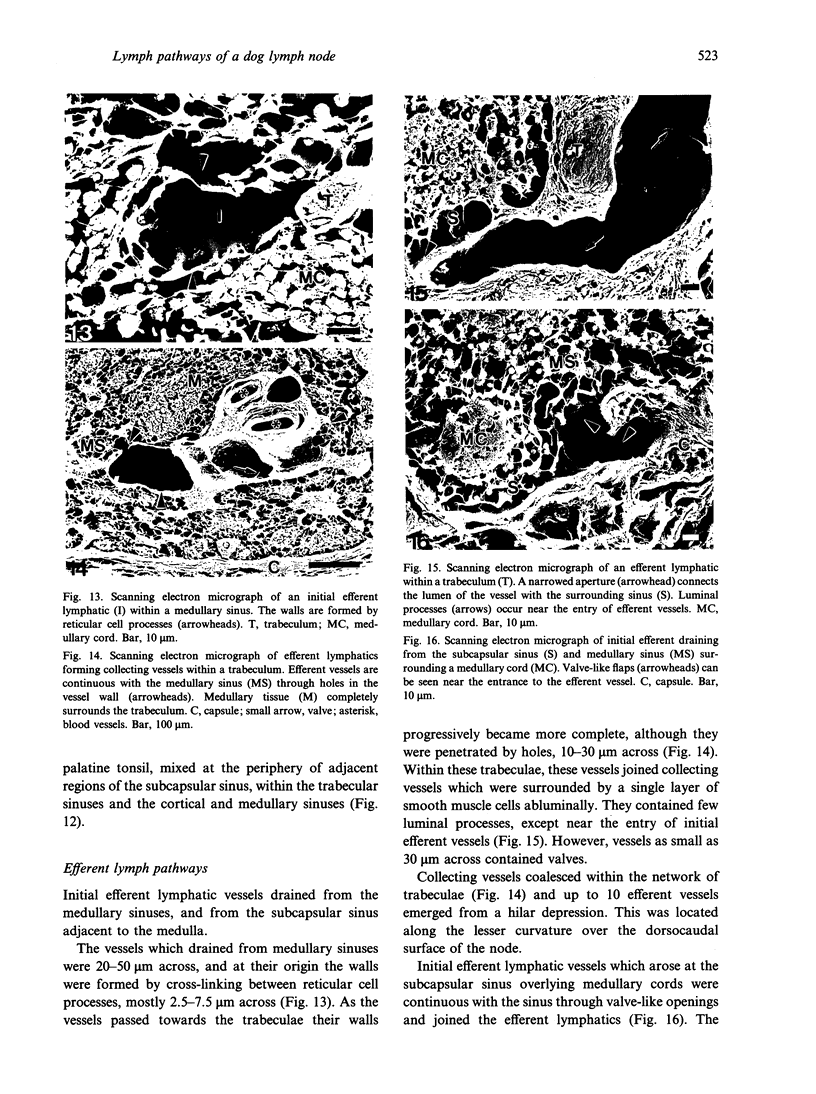
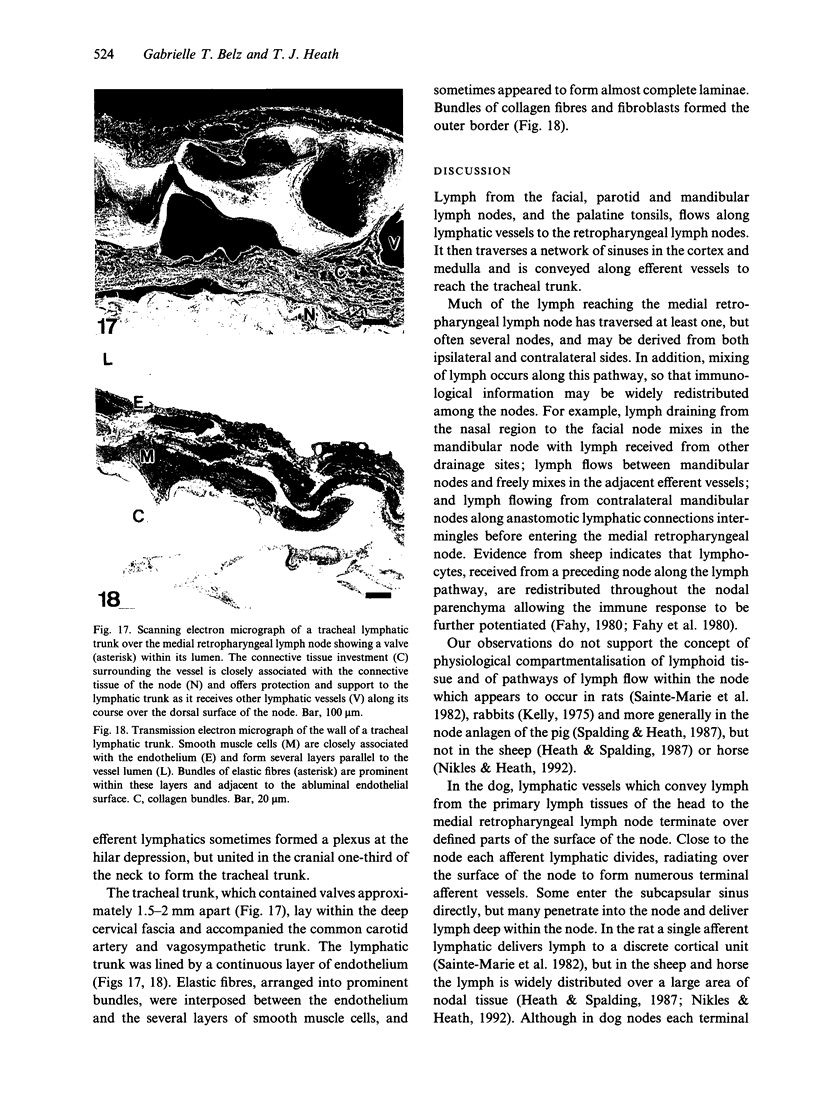
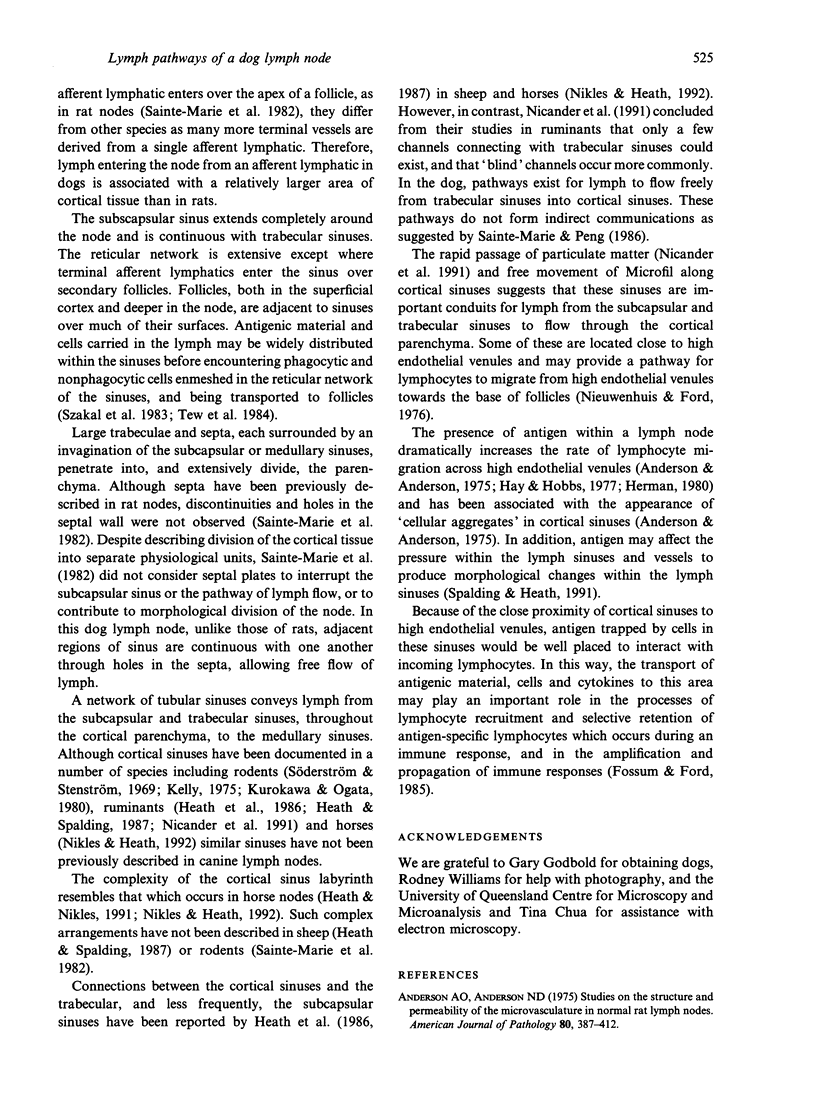
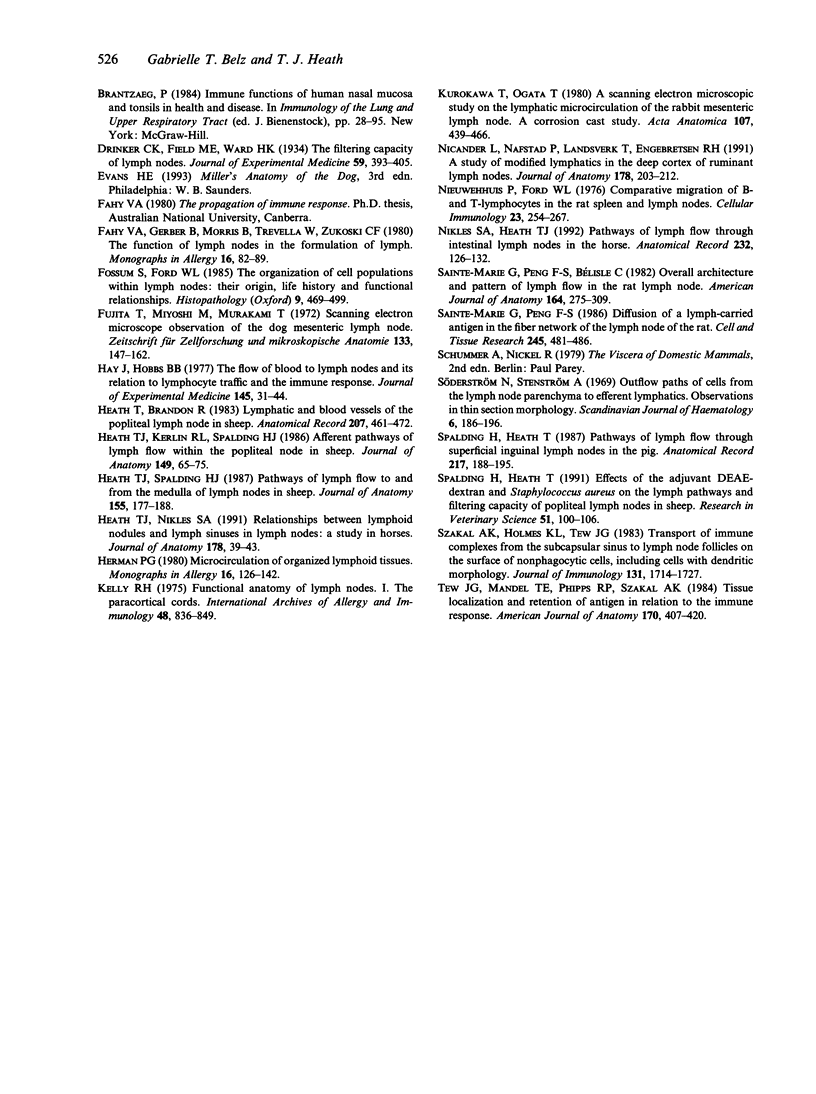
Images in this article
Selected References
These references are in PubMed. This may not be the complete list of references from this article.
- Anderson A. O., Anderson N. D. Studies on the structure and permeability of the microvasculature in normal rat lymph nodes. Am J Pathol. 1975 Sep;80(3):387–418. [PMC free article] [PubMed] [Google Scholar]
- Fahy V. A., Gerber H. A., Morris B., Trevella W., Zukoski C. F. The function of lymph nodes in the formulation of lymph. Monogr Allergy. 1980;16:82–99. [PubMed] [Google Scholar]
- Fossum S., Ford W. L. The organization of cell populations within lymph nodes: their origin, life history and functional relationships. Histopathology. 1985 May;9(5):469–499. doi: 10.1111/j.1365-2559.1985.tb02830.x. [DOI] [PubMed] [Google Scholar]
- Fujita T., Miyoshi M., Murakami T. Scanning electron microscope observation of the dog mesenteric lymph node. Z Zellforsch Mikrosk Anat. 1972;133(2):147–162. doi: 10.1007/BF00307138. [DOI] [PubMed] [Google Scholar]
- Hay J. B., Hobbs B. B. The flow of blood to lymph nodes and its relation to lymphocyte traffic and the immune response. J Exp Med. 1977 Jan 1;145(1):31–44. doi: 10.1084/jem.145.1.31. [DOI] [PMC free article] [PubMed] [Google Scholar]
- Heath T. J., Kerlin R. L., Spalding H. J. Afferent pathways of lymph flow within the popliteal node in sheep. J Anat. 1986 Dec;149:65–75. [PMC free article] [PubMed] [Google Scholar]
- Heath T. J., Nikles S. A. Relationships between lymphoid nodules and lymph sinuses in lymph nodes: a study in horses. J Anat. 1991 Oct;178:39–43. [PMC free article] [PubMed] [Google Scholar]
- Heath T. J., Spalding H. J. Pathways of lymph flow to and from the medulla of lymph nodes in sheep. J Anat. 1987 Dec;155:177–188. [PMC free article] [PubMed] [Google Scholar]
- Heath T., Brandon R. Lymphatic and blood vessels of the popliteal node in sheep. Anat Rec. 1983 Nov;207(3):461–472. doi: 10.1002/ar.1092070308. [DOI] [PubMed] [Google Scholar]
- Herman P. G. Microcirculation of organized lymphoid tissues. Monogr Allergy. 1980;16:126–142. [PubMed] [Google Scholar]
- Kelly R. H. Functional anatomy of lymph nodes. I. The paracortical cords. Int Arch Allergy Appl Immunol. 1975;48(6):836–849. doi: 10.1159/000231371. [DOI] [PubMed] [Google Scholar]
- Kurokawa T., Ogata T. A scanning electron microscopic study on the lymphatic microcirculation of the rabbit mesenteric lymph node. A corrosion cast study. Acta Anat (Basel) 1980;107(4):439–466. doi: 10.1159/000145272. [DOI] [PubMed] [Google Scholar]
- Nicander L., Nafstad P., Landsverk T., Engebretsen R. H. A study of modified lymphatics in the deep cortex of ruminant lymph nodes. J Anat. 1991 Oct;178:203–212. [PMC free article] [PubMed] [Google Scholar]
- Nieuwenhuis P., Ford W. L. Comparative migration of B- and T-Lymphocytes in the rat spleen and lymph nodes. Cell Immunol. 1976 May;23(2):254–267. doi: 10.1016/0008-8749(76)90191-x. [DOI] [PubMed] [Google Scholar]
- Nikles S. A., Heath T. J. Pathways of lymph flow through intestinal lymph nodes in the horse. Anat Rec. 1992 Jan;232(1):126–132. doi: 10.1002/ar.1092320114. [DOI] [PubMed] [Google Scholar]
- Sainte-Marie G., Peng F. S., Bélisle C. Overall architecture and pattern of lymph flow in the rat lymph node. Am J Anat. 1982 Aug;164(4):275–309. doi: 10.1002/aja.1001640402. [DOI] [PubMed] [Google Scholar]
- Sainte-Marie G., Peng F. S. Diffusion of a lymph-carried antigen in the fiber network of the lymph node of the rat. Cell Tissue Res. 1986;245(3):481–486. doi: 10.1007/BF00218547. [DOI] [PubMed] [Google Scholar]
- Spalding H. J., Heath T. J. Effects of the adjuvant DEAE-dextran and Staphylococcus aureus on the lymph pathways and filtering capacity of popliteal lymph nodes in sheep. Res Vet Sci. 1991 Jul;51(1):100–106. doi: 10.1016/0034-5288(91)90039-q. [DOI] [PubMed] [Google Scholar]
- Spalding H., Heath T. Pathways of lymph flow through superficial inguinal lymph nodes in the pig. Anat Rec. 1987 Feb;217(2):188–195. doi: 10.1002/ar.1092170211. [DOI] [PubMed] [Google Scholar]
- Szakal A. K., Holmes K. L., Tew J. G. Transport of immune complexes from the subcapsular sinus to lymph node follicles on the surface of nonphagocytic cells, including cells with dendritic morphology. J Immunol. 1983 Oct;131(4):1714–1727. [PubMed] [Google Scholar]
- Söderström N., Stenström A. Outflow paths of cells from the lymph node parenchyma to the efferent lymphatics--observations in thin section histology. Scand J Haematol. 1969;6(3):186–196. doi: 10.1111/j.1600-0609.1969.tb01825.x. [DOI] [PubMed] [Google Scholar]
- Tew J. G., Mandel T. E., Phipps R. P., Szakal A. K. Tissue localization and retention of antigen in relation to the immune response. Am J Anat. 1984 Jul;170(3):407–420. doi: 10.1002/aja.1001700314. [DOI] [PubMed] [Google Scholar]




